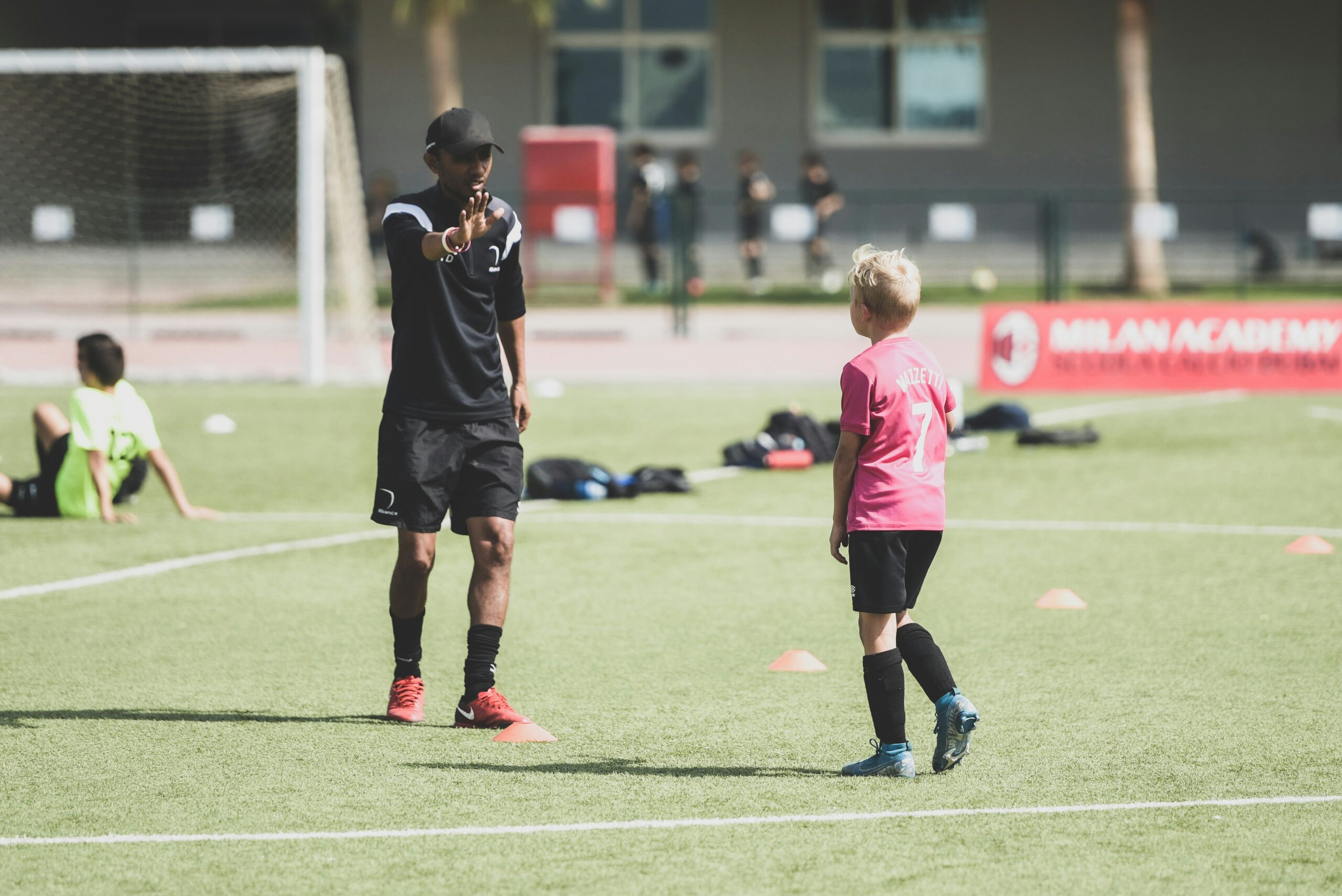How to Coach a Youth Soccer Team: Tips and Techniques

Getting Started: Establishing a Strong Foundation
When embarking on the journey of coaching a youth soccer team, laying a robust foundation is essential. The first step is to understand the age group and skill level of the players. Each age bracket presents unique developmental stages and abilities, which should guide your training methods and communication style. Younger players, for instance, may require more basic drills and a focus on fun to maintain engagement, while older youth may benefit from more sophisticated tactics and skill development. Tailoring your approach to the team’s specific needs ensures that every player can thrive.
Setting clear and achievable goals is another critical component. These objectives should be both short-term and long-term, providing a roadmap for the season. Short-term goals might include mastering basic skills or improving teamwork, while long-term goals could focus on winning specific tournaments or developing advanced techniques. Clearly communicating these goals to the players helps them understand what is expected and motivates them to strive towards these targets.
Establishing a positive and inclusive team culture is equally important. A supportive environment fosters growth and development, both on and off the field. This involves promoting values such as respect, teamwork, and fair play. Encourage open communication, where players feel comfortable expressing their thoughts and concerns. This also extends to interactions with parents. Keeping them informed and involved can significantly enhance the team’s cohesion. Regular updates, meetings, and feedback sessions can help align everyone’s expectations and create a unified approach to the season.
Effective communication is the linchpin of a successful coaching strategy. It is crucial to establish clear lines of communication with both players and parents from the outset. Setting expectations regarding attendance, behavior, and commitment helps avoid misunderstandings. Creating a supportive environment where players are encouraged to learn from their mistakes and celebrate their progress can lead to significant improvements in their performance and morale. By focusing on these foundational elements, you set the stage for a rewarding and successful season.
Essential Coaching Techniques and Drills
Effective coaching for a youth soccer team begins with a strong emphasis on fundamental skills. Mastery of dribbling, passing, shooting, and defending forms the cornerstone of a well-rounded player. It’s crucial for coaches to design practice sessions that are both engaging and instructive, ensuring young athletes remain motivated and excited about their development.
One foundational technique is dribbling. Coaches should introduce drills that focus on control and agility, such as the “Cone Weave” drill. This exercise involves setting up cones in a zigzag pattern and having players weave through them using both feet. This not only improves their ball control but also enhances their dexterity and balance.
Passing drills are equally important. The “Triangle Passing” drill is particularly effective, involving three players passing the ball in a triangular formation. This drill encourages players to focus on accuracy and timing, as well as to develop a better understanding of positioning and movement off the ball.
Shooting drills should also be incorporated to improve precision and power. The “Target Shooting” drill can be beneficial, where players aim for specific targets within the goal. This not only hones their shooting accuracy but also introduces an element of competition, keeping the practice lively and engaging.
Defending is another critical area. The “1v1 Defending” drill, where one player tries to dribble past another, helps players develop their tackling and marking skills. It also enhances their ability to anticipate an opponent’s moves, a vital aspect of effective defending.
Balancing skill development with physical fitness is essential. Incorporating conditioning exercises such as shuttle runs or circuit training into practice sessions can help improve players’ endurance, speed, and overall athleticism. These exercises should be seamlessly integrated with skill drills to maintain a dynamic and engaging practice environment.
By focusing on these essential coaching techniques and drills, youth soccer coaches can foster a positive and productive training atmosphere. This approach not only improves fundamental soccer skills but also promotes physical fitness, ensuring players are well-prepared for the challenges of the game.
Game Day Strategies and Managing the Team
Effective game day strategies are crucial for any youth soccer team. As a coach, your primary role is to prepare your team by developing and implementing game strategies that underscore their strengths while mitigating their weaknesses. Begin by analyzing your team’s performance in practice sessions and previous games. Use this data to create a game plan that plays to your players’ abilities, whether it involves focusing on a strong defense, leveraging speed in counter-attacks, or capitalizing on set pieces.
Creating effective lineups is another key aspect of game day preparation. Consider factors such as player fitness, recent performance, and the specific demands of the opponent. It’s also essential to communicate the lineup and game plan clearly to your players before the match, ensuring everyone understands their roles and responsibilities.
Once the game is underway, be prepared to make real-time decisions. Soccer is a dynamic sport, and conditions can change rapidly. Watch for signs of fatigue, injuries, or shifts in the opponent’s strategy, and adjust your tactics accordingly. Substitutions should be strategic, aimed at maintaining the team’s performance level and addressing any emerging weaknesses.
Providing constructive feedback during the game is vital. Focus on positive reinforcement to keep morale high, and offer specific, actionable advice to help players improve. Halftime presents an excellent opportunity to review the first half, highlight what worked well, and discuss adjustments for the second half.
Sportsmanship is a cornerstone of youth sports. Emphasize the importance of playing fair, respecting opponents, and handling both victories and defeats with grace. Celebrate wins modestly and learn from losses without assigning blame. This approach fosters a positive team environment and ensures that the experience remains enjoyable for all players.
In conclusion, effective game day management involves thorough preparation, strategic decision-making, and a focus on sportsmanship. By prioritizing these elements, you can help your youth soccer team perform at their best and enjoy the game to its fullest.
Continuing Development and Long-term Success
Ensuring the continued development of players and the long-term success of a youth soccer team requires a multifaceted approach. One of the foundational elements is setting long-term goals that are both realistic and challenging. These goals should encompass individual skill improvement, team performance, and personal growth. By clearly communicating these objectives, players can maintain focus and motivation throughout the season.
Providing ongoing feedback is another critical component. Constructive feedback helps players understand their strengths and areas for improvement, fostering a growth mindset. Regular one-on-one sessions with players can be instrumental in building trust and providing personalized guidance. Coaches should balance positive reinforcement with constructive criticism to nurture confidence and resilience.
Fostering a love for the game is essential for long-term engagement. Keeping practices and games engaging and enjoyable is key. Introducing new drills that challenge players and keep them interested can prevent monotony. Participating in local tournaments adds a competitive edge and provides valuable experience. Encouraging players to watch professional soccer can also be beneficial; it allows them to learn from the best and develop a deeper understanding of the game.
The role of the coach extends beyond tactical and technical instruction. Being a positive role model and mentor significantly impacts the players’ development. Demonstrating qualities such as integrity, sportsmanship, and dedication can inspire young athletes to emulate these traits. Building a team culture that values hard work, dedication, and fun creates an environment where players can thrive both on and off the field.
Ultimately, the long-term success of a youth soccer team hinges on the collective efforts of coaches, players, and their support systems. By setting clear goals, providing continuous feedback, making the game enjoyable, and embodying positive values, coaches can cultivate a team that not only excels in soccer but also develops skills that last a lifetime.
